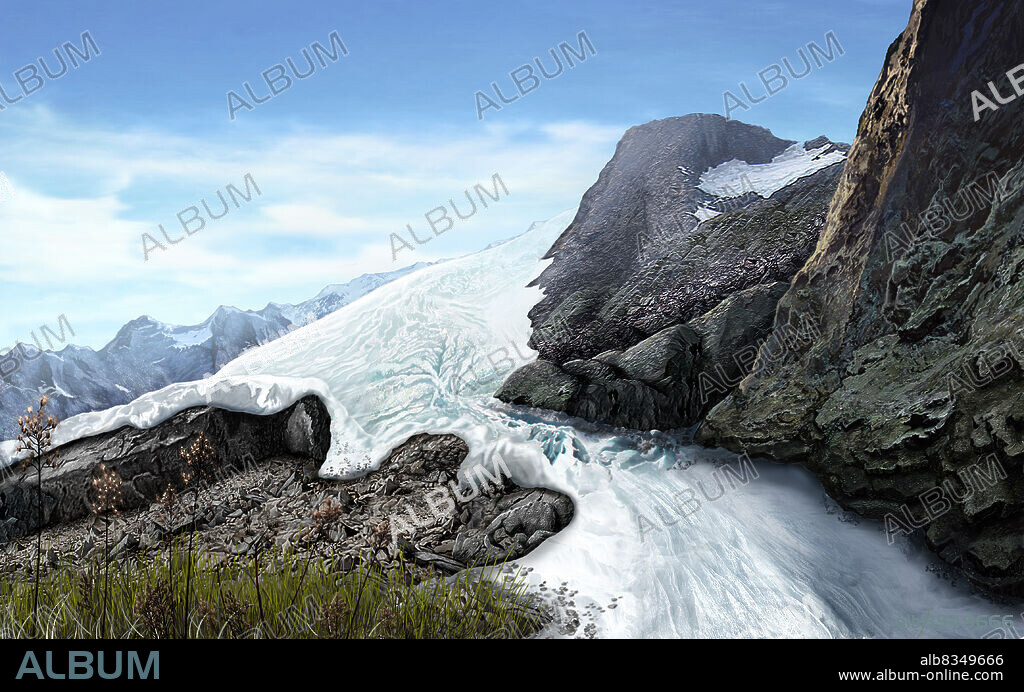alb8349666
In the coldest regions of the planet, the snow never melts. As it collects, snow becomes compacted by its own weight. It turns granular and after several years is transformed into ice. As it slides down a mountainside,. this heavy ice becomes an enormous, moving mass called a glacier. Glaciers are found on Earths highest mountains. Vast continental glaciers, called inland ices, cover most of Greenland and Antarctica. The Greenland inland ice alone covers more than 660,000 square miles (1.7 million sq km). During the last ice age, a period of cold that affected much of our planet, an ice sheet several miles (or kilometers) thick covered almost 30 percent of the Earths land surface. This area included almost half of North America and Europe. With the gradual warming of the planet, most of the ice sheet melted. Today, ice caps and glaciers cover only about 10 percent. of the continents.

|
Zu einem anderen Lightbox hinzufügen |
|
Zu einem anderen Lightbox hinzufügen |



Haben Sie bereits ein Konto? Anmelden
Sie haben kein Konto? Registrieren
Dieses Bild kaufen.
Nutzung auswählen:

Untertitel:
Siehe automatische Übersetzung
In the coldest regions of the planet, the snow never melts. As it collects, snow becomes compacted by its own weight. It turns granular and after several years is transformed into ice. As it slides down a mountainside,. this heavy ice becomes an enormous, moving mass called a glacier. Glaciers are found on Earths highest mountains. Vast continental glaciers, called inland ices, cover most of Greenland and Antarctica. The Greenland inland ice alone covers more than 660,000 square miles (1.7 million sq km). During the last ice age, a period of cold that affected much of our planet, an ice sheet several miles (or kilometers) thick covered almost 30 percent of the Earths land surface. This area included almost half of North America and Europe. With the gradual warming of the planet, most of the ice sheet melted. Today, ice caps and glaciers cover only about 10 percent. of the continents.
Bildnachweis:
Album / Universal Images Group
Freigaben (Releases):
Bildgröße:
4587 x 2864 px | 37.6 MB
Druckgröße:
38.8 x 24.2 cm | 15.3 x 9.5 in (300 dpi)
Schlüsselwörter:
 Pinterest
Pinterest Twitter
Twitter Facebook
Facebook Link kopieren
Link kopieren Email
Email
